02 - Alport heights (SK305-515). A thousand foot hill with a trig point, now
graced by two big radio masts and a motorcross course. Bottom right
is Spout village, 2 miles SE of Wirksworth. Top right is Coneygreave Farm.
The area used to be called Ashleyhay. The gorsey area is National Trust.
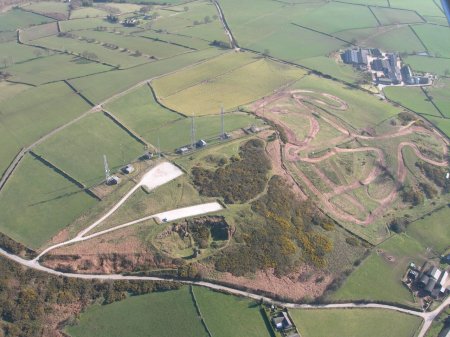 |
03 - Riber Castle (SK309-590), a fine view of the mock gothic ruin built
about 1867 as a summer retreat by the famous John Smedley. Built on the
summit of a steep hill, it is the most eyecatching sight on a visit to
Matlock. The Hydro, built by the same man, is the next most
eyecatching sight. More views and info on X166.
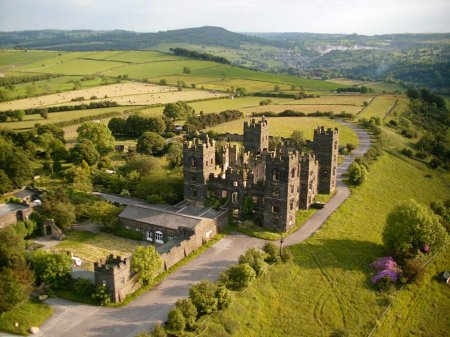 |
04 - Matlock Bath (SK295-584). The bridge over the River Derwent is
Jubilee Bridge, and top-right is the
Railway station. Across the river,
Matlock Bath faces the highest inland vertical cliff in England.
The A6 follows the river along the Dale.
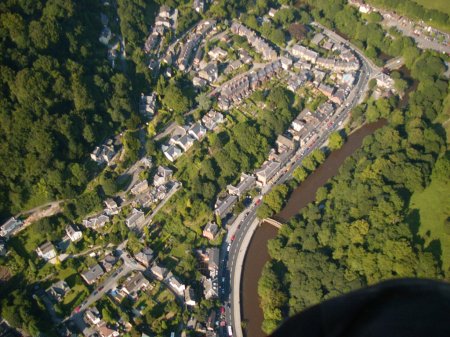 |
05 - Bonsall Moor (SK245-600). Looking E along Bonsall Lane at the junction
with Bonsallmoor Lane. The ridge looks down on Winster (left) and is
pockmarked with old lead mine shafts, some said to be still open but all dangerous.
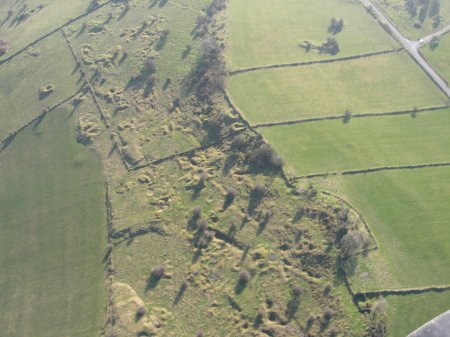 |
06 - Middleton Top engine House (SK277-552) on the old
Cromford & High Peak Railway. Built in 1828, the CHPR
once had 9 such stationary engines dragging trucks up 1 in 8 inclines.
Middleton Top is now the only engine house still
existing. The railway has been dismantled, and turned into a trailway
for walkers and cyclists.
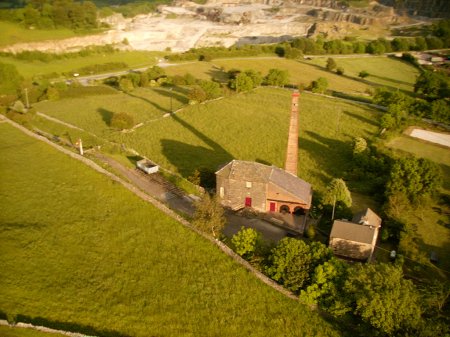 |
07 - Cromford Village (SK295-569). The village was rebuilt around 1780 by
Sir Richard Arkwright to house workers
in his new water-powered Cotton Spinning Mill, which introduced the factory
system and changed the world. The Lake in the village centre is behind a dam
which controlled the supply of water to the waterwheels driving the spinning
machines in the factory.
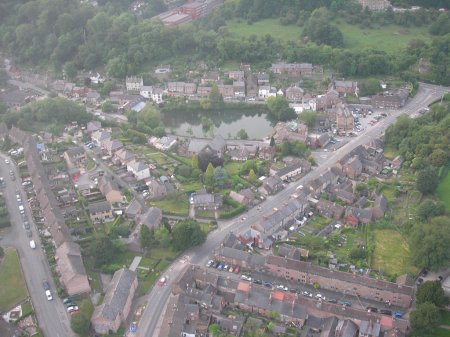 |
09 - Middle Peak Quarry (SK280-545), 66 acres on the NW edge of Wirksworth town.
Mechanisation in the 1950's greatly
increased production, heavy lorries passing through the town nearly ruined
Wirksworth with vibration, dust and danger. Inactive for 12 years, quarrying
threatens to start again in 2007. Limestone quarrying replaced lead mining
around 1800 when the lead ran out after 2,000 years.
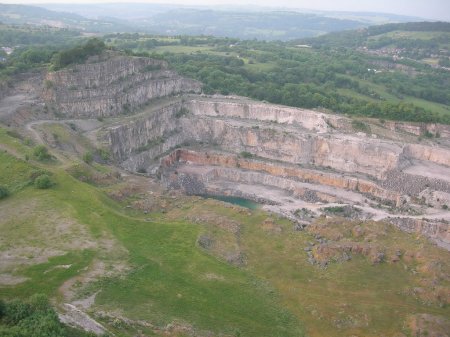 |
10 - Masson Mill (SK295-573) and River Derwent. Masson mill
was the second built by Sir Richard Arkwright, about 1783. Arkwright also
built himself a fine big house at Willersley, looking
down onto the mill from the other side of the river. 100 years later,
Lawton the manager of Masson also built himself a fine house called
Woodbank, looking down onto the Mill from the other
side of the mill.
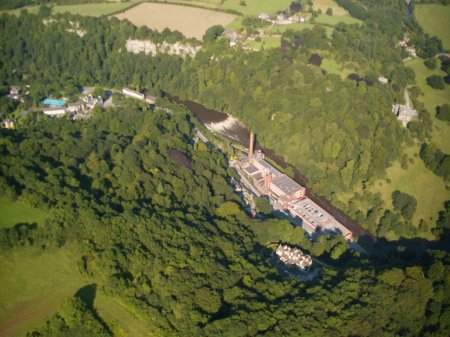 |
08 - Old blackpowder store in Wirksworth quarry. Powder was used
in blasting leadmines long before its use for rockblasting in limestone
quarries, and was well understood. Made from sulphur, charcoal and
saltpetre, it was the only known explosive until around the mid 1800s,
when it was replaced by TNT
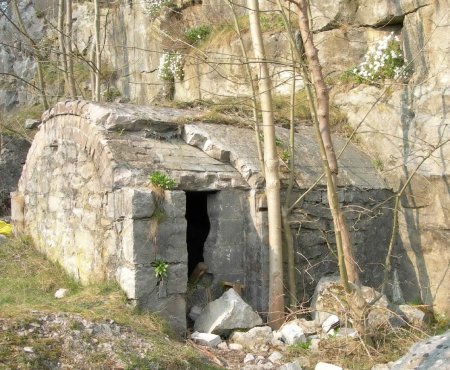 |
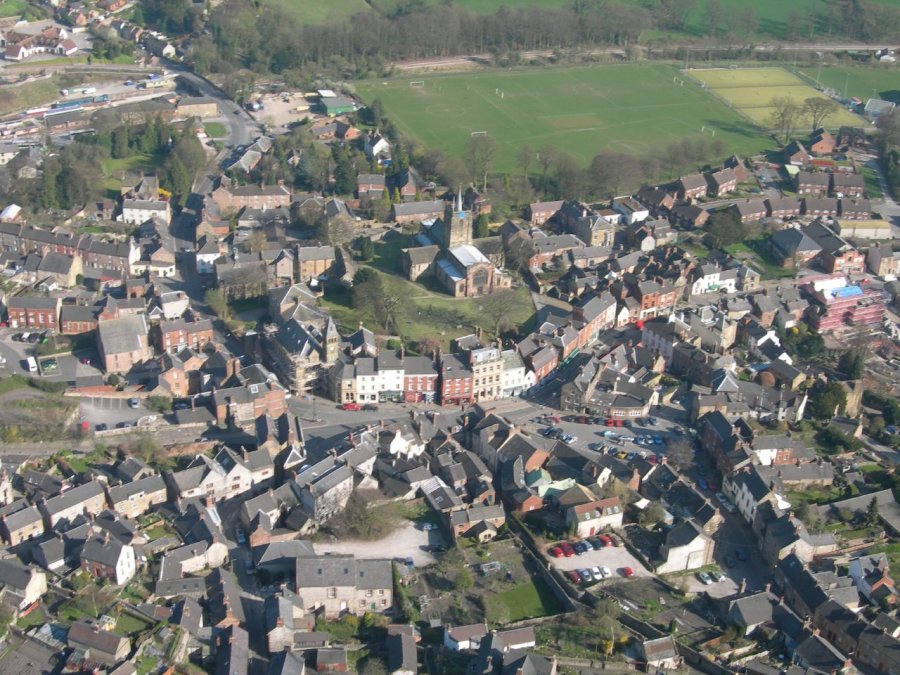









 All Rights Reserved.
All Rights Reserved.